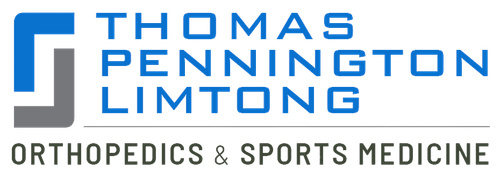 A growth plate fracture in case of children occurs at the end of a bone before the bone has fully matured from cartilage to hard bone. A proximal humerus fracture occurs in the upper arm, close to the shoulder. Most of the young children with proximal humerus fracture can benefit from non-surgical treatment.
A growth plate fracture in case of children occurs at the end of a bone before the bone has fully matured from cartilage to hard bone. A proximal humerus fracture occurs in the upper arm, close to the shoulder. Most of the young children with proximal humerus fracture can benefit from non-surgical treatment.
In other cases, surgical treatment may be advised to improvement alignment of the fracture and reduce the risk of malunion. Board certified orthopedic surgeons at Thomas & Bigler Knee & Shoulder Institute provide treatments for proximal humerus growth plate fracture to patients in Las Vegas, Nevada and surrounding communities in The Silver State.
Symptoms
Symptoms of proximal humerus growth plate fracture include sudden pain in the upper arm and shoulder at the time of injury. This is accompanied by quick swelling in the shoulder. The patient will find it difficult and painful to move the arm. In some cases, the shoulder joint may look deformed after the injury.
Causes
A growth plate fracture is usually caused due to a fall or impact on the arm or shoulder. But in some cases, it may also occur because of overuse of the joint. Long bones such as the humerus typically grow from the ends. At each end there is a growth plate, which is the final part of the bone that hardens from cartilage. That makes it a more vulnerable area to injury.
Growth plate fractures most often occur in children and adolescents, and rarely in adults. The ligaments and other soft tissues surrounding the joint are stronger in a child than the soft bone is. In adults, on the other hand, the soft tissue is more susceptible to injury.
Treatment
If the surgeon suspects a fracture, they will take an x-ray or MRI to confirm the diagnosis and the extent of bone displacement. Conservative treatment may be followed if the injury is non-displaced. The patient will go through a period of immobilization to allow for healing. This will be followed by rehabilitation to regain full movement and strength.
If the two bones are misaligned or separate in a fracture, a surgery may become necessary. The goal of the surgery will be to realign the bones and fix them in the right place using wires or pins. Here again immobilization is essential, which will be followed by rehabilitation.
Surgical Options
Closed reduction surgery may be performed under anesthesia to create an acceptable alignment. But if the fracture continues to be relatively unstable, the surgeon might perform percutaneous pin fixation after a closed reduction. Pins are typically placed retrograde through the metaphysis and enter the humeral epiphysis. The surgeon may use buried smooth or threaded pins to reduce the incidence of pin site infections or pin migration.
An open reduction may be performed if an acceptable closed reduction is not possible. This is often performed using a standard axillary approach. Other possible approaches include a deltoid split and a deltopectoral approach. Most surgeons favor percutaneous pin fixation, or occasionally internal fixation, after open reduction to minimize future displacement.
Board certified orthopedic surgeons Dr. Steven Thomas and Dr. Gregory Bigler receive patients from Las Vegas, Nevada and nearby areas for proximal humerus fracture treatment.
If you would like to schedule an appointment or learn more about the Knee and Shoulder Institute procedures & treatments performed by Las Vegas, Nevada board certified surgeons Steven C. Thomas, MD and Gregory T. Bigler, MD. call (702) 933-9393; Physical Therapy (702) 933-9393.
